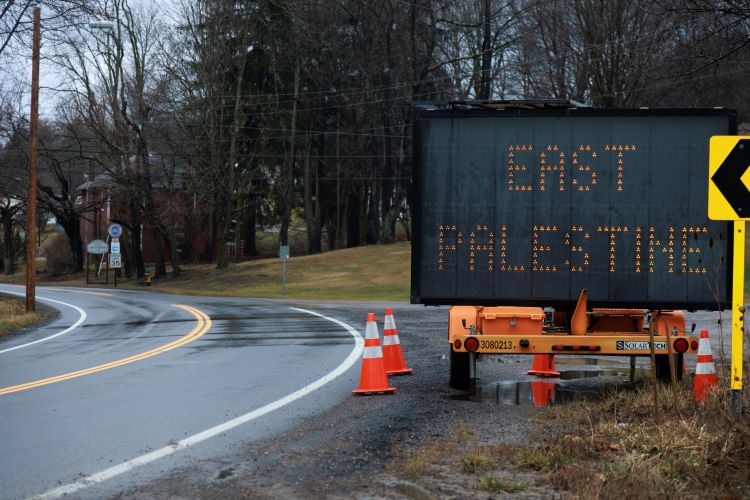Lawyers flock to East Palestine after train derailment, hosting information sessions and signing up clients

An electronic street sign displaying public information is seen in East Palestine, Ohio, on Feb. 27, following a train derailment earlier in the month that released toxic waste into the region. Photo by Bryan Olin Dozier/NurPhoto via the Associated Press.
Lawyers from across the country are visiting the town of East Palestine, Ohio, the site of the freight train derailment that released toxic chemicals into the community.
Lawyers are hosting information sessions, meeting residents, collecting evidence and filing lawsuits, report the New York Times and the Cincinnati Enquirer. By Feb. 24, when the New York Times first published its story, dozens of suits had been filed.
The information sessions have been at the Best Western, an American Legion hall and a high school cafeteria. One law firm investigator is meeting with residents at a bar. Lawyers and representatives in the area are from firms that include MotleyRice, Morgan & Morgan and Cory Watson.
Erin Brockovich, the environmental activist who gathered information on polluted drinking water in California, was also on hand to speak at a presentation that also included Texas lawyer Mikal Watts.
The New York Times says cases filed could be consolidated as a class action or multidistrict litigation against Norfolk Southern, the operator of the train.
A law partner of Louisiana lawyer Calvin Fayard Jr. is also in East Palestine. His firm, Fayard & Honeycutt, is among four firms that have filed a federal suit seeking class action status, WPSD Local 6 reports.
Fayard was a lead lawyer in a suit filed after a 1982 derailment of a train transporting vinyl chloride, one of the chemicals released in East Palestine. That case led to a $39 million settlement that also established a commission to monitor health problems and decontamination of soil and water.
“It looks like these dadgum railroads would get it right after that many years and stop falling off the tracks but they just can’t do it,” Fayard told the New York Times.



